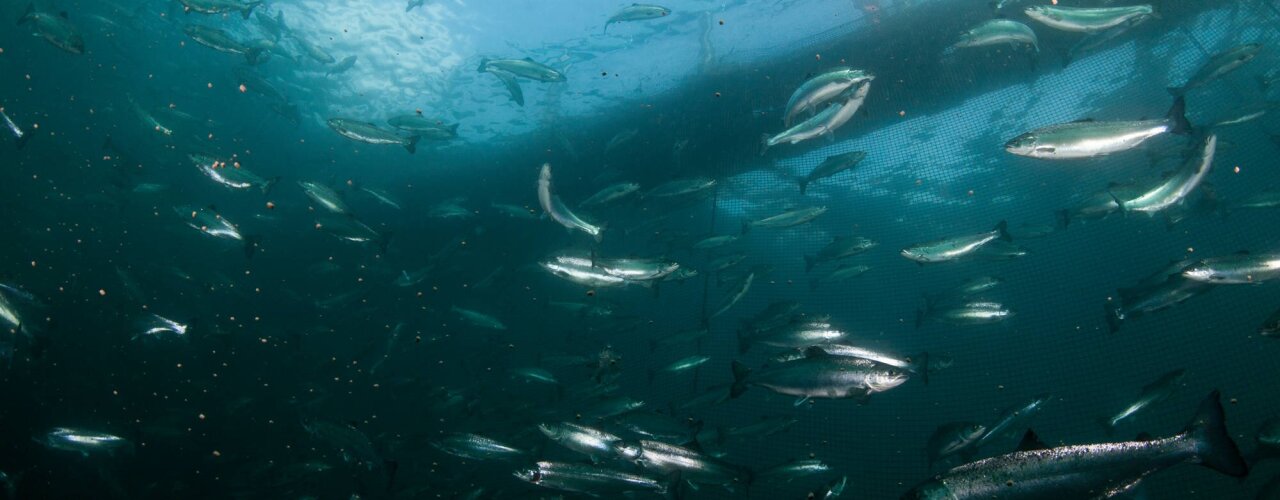From 2006, the number of escaped salmon fell from 921,000 to the historically low figure of 15,000 in 2017. According to the escape statistics from the Norwegian Directorate of Fisheries, this is a 98 per cent reduction. In 2018, a total of 160,000 salmon escaped.
The objective is to reach a level where escaped salmon does not have a negative effect on wild fish. This is an important issue both for the industry and for the authorities. The number of escaped fish has to be reduced to a minimum and considerable resources have been made available to find a solution.
Why do escaped fish pose a problem?
The genetic material of Norwegian farmed salmon comes from the country's salmon rivers. The problem with escaped farmed salmon is that farmed may spawn with wild salmon, which may cause issues for the wild salmon populations. This is the main reason Norway has invested heavily to prevent escapes in the last 10-15 years. It is also the reason why all fish farms must focus on escapes in all operations, every day. Escaped salmon represents financial losses for the industry, and it also affects the industry's reputation and working conditions.
Why do salmon escape?
There are several reasons why fish escape. The most common are technical failure, faulty use of equipment, and nets that are damaged by boats and propellers. Heavy storms can also cause equipment breakdowns that allow fish to escape. According to regulations, sites are to be equipped to withstand regular storms for a period of 50 years. In 2003, a comprehensive technical standard was prepared for this purpose. The first edition of the standard's relevant regulations was put in place in 2004. The regulations specify certain requirements for certification of equipment and third-party reviews of mooring systems and sites.
Poorly secured drains used to be the most common cause of escapes. Since 2008 it has been a requirement to have double securing drains, which has reduced the problem significantly.
What is the solution?
All aquaculture sites are required to monitor their fish and installations daily. The Aquaculture Operations Regulations state that site managers are obliged to have the necessary knowledge to prevent, detect and limit escapes. It is also a requirement to have an up-to-date plan that includes an overview on how to detect, limit and catch escaped fish effectively. Risk assessments are carried out to minimize the risk of escapes. The risk assessment forms the basis for systematic measures. The mesh size of the nets must be adapted to the size of the fish, making sure they cannot get through the net. In addition, nets are checked regularly, both before and during operation. In 2013, another technical standard was introduced for land-based aquaculture facilities. This standard includes requirements for risk analysis, design, construction, operations etc.
In 2015, there was a new regulation on joint responsibility for recapturing escaped fish in rivers. In the same year the OURO (the aquaculture industry association for escaped fish) was established to enforce the regulation. The regulation defines when the proportion of escaped salmon in a river has reached a level that makes it necessary to put measures in place. The OURO board carries out the assessments and plans any measures needed. It is obligatory to join the association. Any measures required will be funded by the fish farmers through a mandatory fee, payable by those who do not trace their fish. This compulsory scheme replaced the voluntary Environmental Fund (Miljøfondet), which was set up and funded by the aquaculture industry in 2011. The old Environmental Fund implemented various measures in over 100 rivers and spent around 30 million Norwegian kroner in the four to five years that the fund was operational. The funds were mainly used on monitoring and recapturing escaped fish, education and tracing.
Other important measures to prevent escapes are:
- Training and knowledge sharing. Since 2008, courses set up by the aquaculture industry, the government and researchers have been offered every year. The courses are in great demand and attract high numbers of participants.
- Innovation and improvement of equipment.
- Making sure that mooring systems and equipment are suitable for the site, and that different parts of the equipment are compatible with each other.
- Guidelines for best practices.
- A public escape commission, organized by the industry, with the intention of learning from previous mistakes.
- Learning from near misses. Reporting, sharing experiences and having good preventive measures in place.
More research is needed to clarify to what extent escaped farmed salmon affect wild salmon. It is clear that any activity has an impact, but it is important to understand if and to what extent the survival and evolution of wild salmon are affected by escaped salmon. It will also be important to standardize and optimize a method for monitoring escaped fish. This is necessary to make sure that the right measures are put in place.
Public escape statistics
It is mandatory to report all cases and suspected cases of escaped fish. The numbers are published on the Directorate of fisheries' website. The statistics show a downward trend for escaped salmon since the peak in 2006. Similarly, reports from monitored rivers also show a clear downward trend. This positive development has taken place even though production of farmed salmon has increased, and it confirms that the measures that are put in place work.
Useful links
The Directorate of Fisheries' statistics of escaped farmed salmon (in Norwegian only): http://www.fiskeridir.no/Akvakultur/Statistikk-akvakultur/Roemmingsstatistikk
The national monitoring program of escaped farmed salmon in rivers (in Norwegian only): https://www.hi.no/filarkiv/2018/06/romt_laks_fisken_og_havet_2018.pdf/nb-no
Regulations on joint responsibility for retrieving escaped fish (in Norwegian only): https://lovdata.no/dokument/SF/forskrift/2015-02-05-89
The Norwegian Institute of Marine Research reports less occurence of escaped farmed salmon in Norwegian rivers (in Norwegian only): https://www.hi.no/hi/nyheter/2018/juni/mindre-romt-oppdrettslaks-i-elvene
